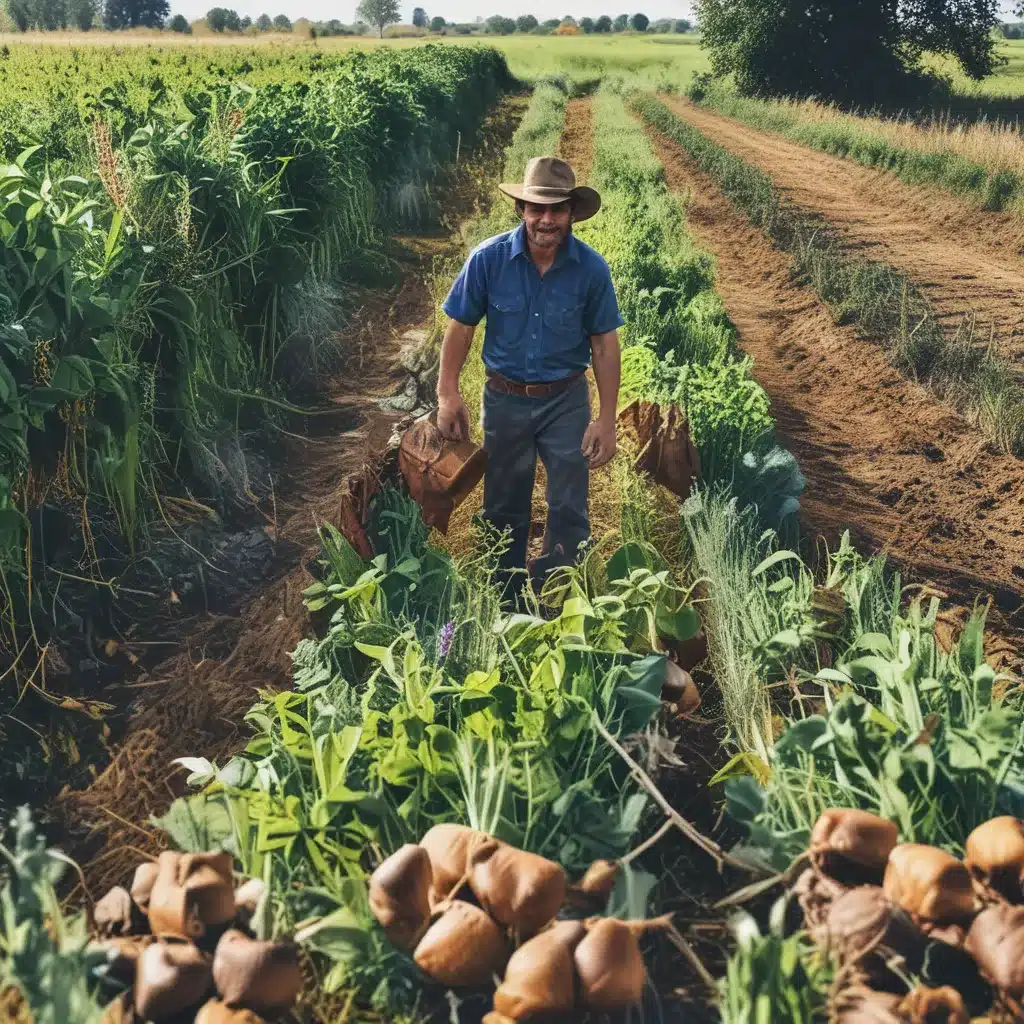
The Farming Rollercoaster: From Conventional to Regenerative
It all started with a simple question that kept nagging at me: “Is there a better way to farm?” As the owner of Thorn Apple CSA, I had seen the ups and downs of conventional agriculture firsthand. The reliance on synthetic fertilizers, the ever-increasing use of pesticides, and the detrimental impact on the soil – it just didn’t sit right with me. I knew there had to be a more sustainable approach, one that worked in harmony with nature rather than against it.
My journey into regenerative farming began with a bit of trepidation, I’ll admit. The thought of completely overhauling our operations was daunting, to say the least. But as I delved deeper into the research and spoke with other farmers who had made the switch, I realized the immense potential for both our land and our community.
The transition was not without its challenges, of course. Conventional farming had become ingrained in our operations, and breaking free of those habits required a significant shift in mindset. But with each passing season, I saw the incredible transformation unfold before my eyes. The soil became richer, more vibrant, and teeming with life. The crops grew stronger and more resilient, requiring fewer inputs and producing higher yields. And the feedback from our CSA members? Well, let’s just say they were as giddy as a bunch of kids in a candy store.
The Regenerative Revolution: Unlocking Nature’s Potential
At the heart of regenerative farming lies a fundamental shift in perspective. Instead of viewing the land as a resource to be exploited, we now see it as a living, breathing ecosystem that deserves our utmost care and attention. Through the implementation of techniques like cover cropping, no-till practices, and the integration of livestock, we’re not only restoring the health of our soil but also promoting biodiversity and enhancing the natural resilience of our farm.
One of the most remarkable aspects of regenerative farming is the way it harnesses the power of photosynthesis. By encouraging the growth of diverse plant species, we’re able to capture more carbon from the atmosphere and store it in the soil, effectively sequestering it and reducing our overall carbon footprint. It’s a win-win for both the environment and the bottom line, as healthier soil means higher crop yields and reduced reliance on costly inputs.
But the benefits of regenerative farming extend far beyond the boundaries of our own land. By partnering with our CSA members, we’re able to share the bounty of our labor and the story of our transformation. Each box of fresh, nutrient-dense produce that leaves our farm is a testament to the power of working in harmony with nature. Our CSA members have become active participants in this journey, sharing in the triumphs and the challenges, and reveling in the knowledge that their support is making a tangible difference.
The CSA Advantage: Cultivating Community and Resilience
As a CSA, we have the unique privilege of forging deep connections with the families and individuals who choose to join our community. These relationships go far beyond the simple exchange of goods and services; they’re built on a foundation of trust, shared values, and a collective commitment to creating a more sustainable and resilient food system.
One of the most gratifying aspects of our CSA model is the way it empowers our members to become active participants in the farming process. They’re not just passive recipients of our produce; they’re invested stakeholders who understand the challenges and triumphs of regenerative agriculture. From helping to weed the fields during community workdays to sharing their favorite recipes and culinary adventures, our CSA members are an integral part of the Thorn Apple story.
But the benefits of this partnership extend far beyond the realm of food production. By supporting our regenerative farming practices, our CSA members are actively contributing to the restoration of our local ecosystem, the mitigation of climate change, and the creation of a more resilient community. It’s a powerful reminder that the choices we make as consumers can have a profound impact on the world around us.
Reaping the Rewards: A CSA’s Perspective on Regenerative Farming
As I reflect on our journey into regenerative farming, I’m struck by the remarkable transformation that has taken place, both on our land and within our community. Where once we struggled with declining soil health, dwindling yields, and a growing reliance on costly inputs, we now see vibrant, thriving ecosystems teeming with life and resilience.
The rewards of our regenerative approach are manifold, but perhaps the most tangible is the quality and nutrient density of the produce we’re able to bring to our CSA members. From the juicy, vine-ripened tomatoes to the crisp, earthy greens, each bite is a celebration of the inherent power of nature. Our members have become ardent advocates for our cause, sharing stories of improved health, increased energy, and a newfound appreciation for the complexities of the food system.
But the true rewards of regenerative farming go far beyond the mere physical attributes of our crops. By investing in the long-term health and resilience of our land, we’re creating a legacy that will benefit generations to come. Our children and grandchildren will inherit a thriving, vibrant ecosystem, one that is capable of withstanding the challenges of a rapidly changing climate and providing a reliable source of nourishment for our community.
As I look to the future, I’m filled with a sense of optimism and excitement. The regenerative revolution is gaining momentum, and I’m honored to be a part of this movement. By sharing our story and the incredible bounty of our land, we hope to inspire others to join us in this journey of healing and restoration. After all, the rewards of regenerative farming are not just for us to reap, but for the entire planet to cherish.



